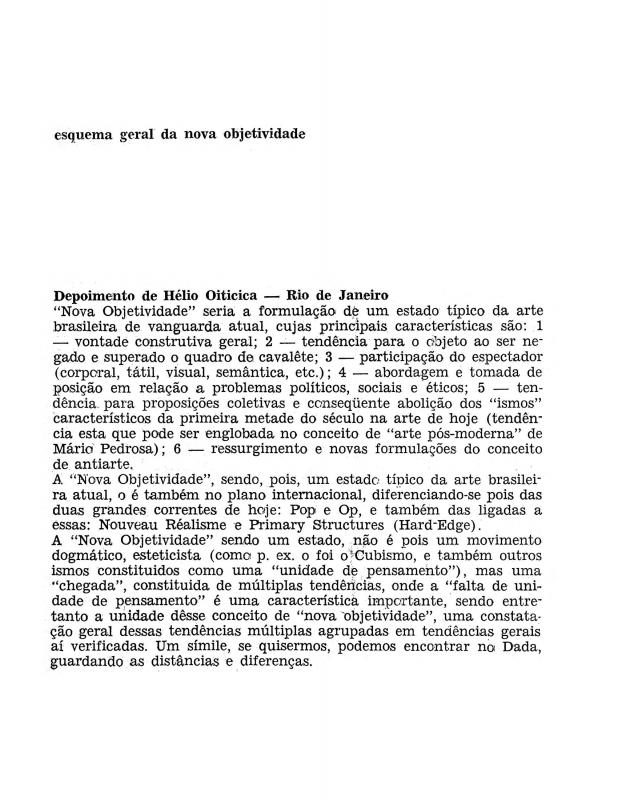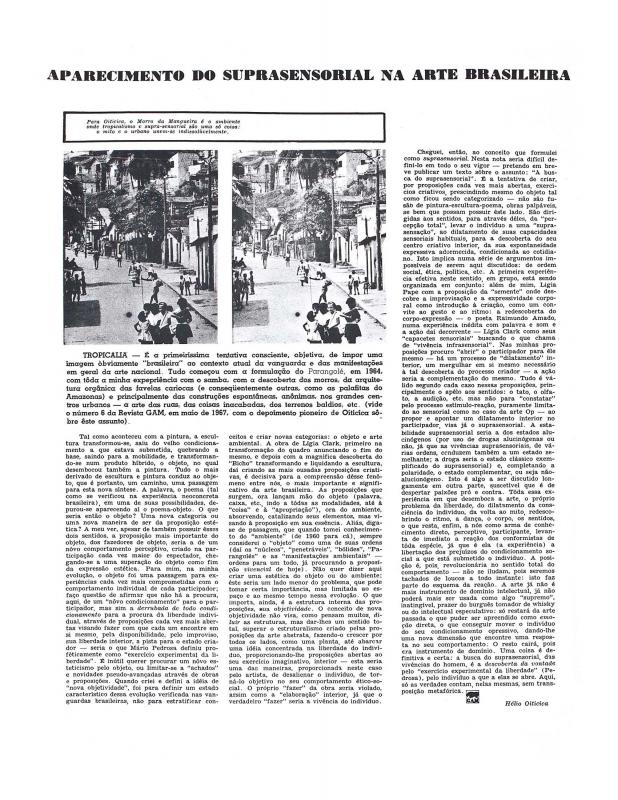Starting with its irreverent title, this article expresses Hélio Oiticica’s radical disagreement with the “lack of character” implicit in Brazil’s inability to see the connection between its problems and the cultural factors that contribute to its “provincial predicament.” The author demands the formulation in universal code of local peripheral issues that are related to both the aesthetic order and “the global thing” that affects the area of social practices. This article was written in the early 1970s and refers to the terms of exile imposed on the popular music composers Caetano Veloso and Gilberto Gil as a result of the political repression instituted by the military dictatorship that lasted for over two decades in Brazil (1964–85). The article also mentions the “reactionary dilution” of the criticism of the cult of good taste expressed at the time by the “tropicalista” musical movement; this was all, without a doubt, part of “the general state of things” and the result of what the author calls Brazil’s “diarrhea mentality.”
Hélio Oiticica (1937–80) was a Brazilian Neo-Concrete artist. He started studying painting with Ivan Serpa in 1954 at the Museu de Arte Moderna do Rio de Janeiro. He later joined the Grupo Frente and the Neo-Concrete movement. In addition to his geometric paintings, which he worked on while he was studying with Serpa and was a member of the Grupo Frente, Oiticica produced performance and participatory art. His Parangolés (1964)—capes made with fabrics and recycled materials—were worn by the Mangueira Samba School during their performances. Oiticica also created immersive spaces, such as Nucleus (1959–60), which was an installation constructed from suspended painted wooden slats inspired by the Constructivism of Piet Mondrian. In 1967 Oiticica created the immersive environment Tropicália at the Museum of Modern Art in Rio de Janeiro. Tropicália was an installation consisting of rooms with plants and materials such as water, sand and stones, a parrot, a television set, and various other elements that were representative of Brazilian popular culture. The environment was designed to promote sensory stimulation. Oiticica applied the same principles to Eden, the installation he created in 1969 at the Whitechapel Gallery in London. The name Tropicália was used by Brazilian musicians to describe a new style that combined international music and pop with traditional Brazilian music. The term “Tropicália” was absorbed into popular Brazilian culture and came to signify a uniquely Brazilian essence. In 1970 Oiticica took part in the group exhibition Information at the Museum of Modern Art in New York.
For more examples of Oiticica’s thoughts on Brazilian art in the late 1960s and early 1970s, see the essay “Esquema geral da nova objetividade” [doc. no. 1110372], and the article “Aparecimento do suprasensorial na arte brasileira” [doc. no. 1110620].


